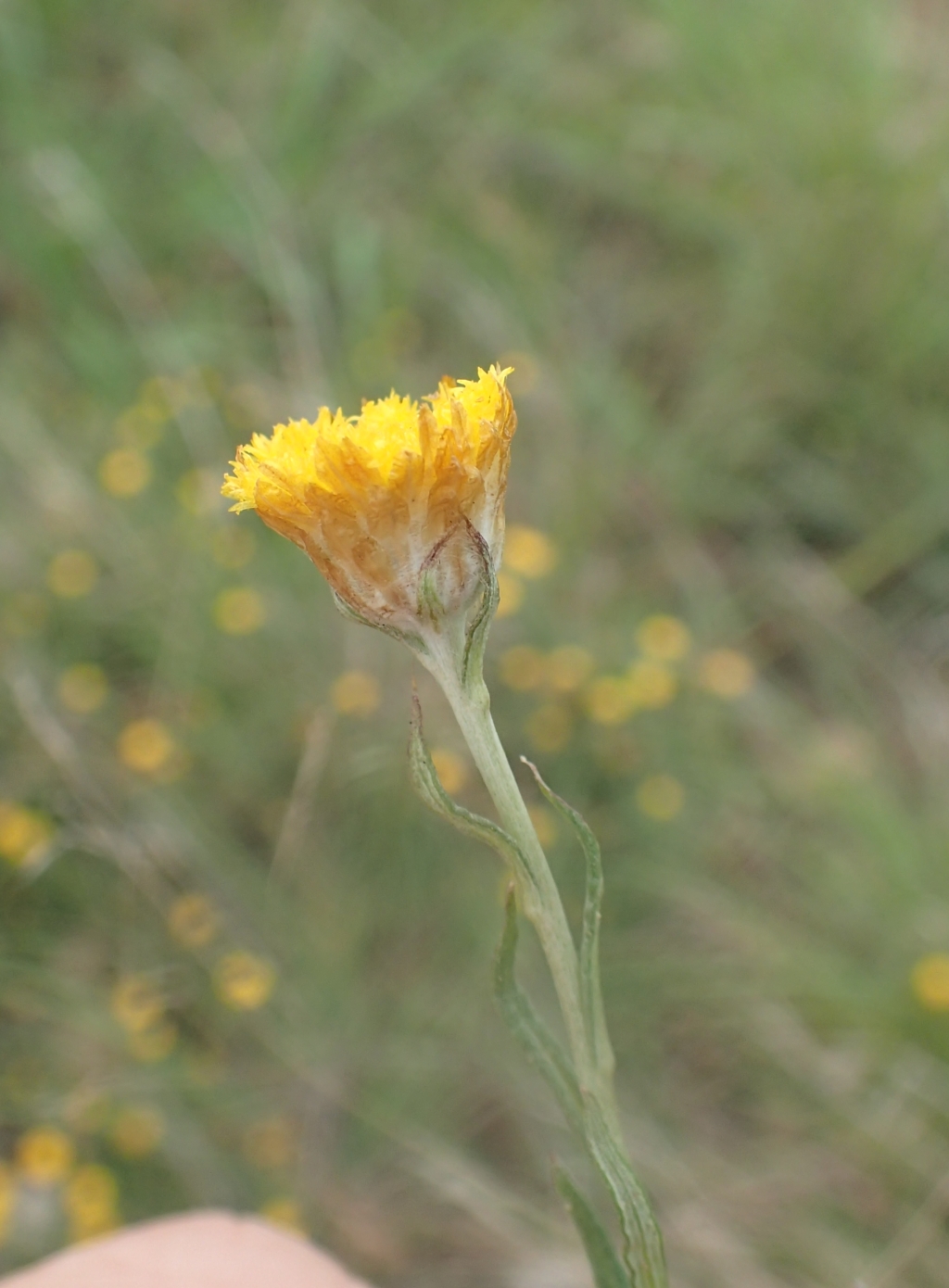Coronidium gunnianum
(Hook.) N.G.WalshErect rhizomatous perennial to c. 50 cm high; vegetative stems freely branched, appressed-cottony. Leaves sessile, linear to oblanceolate, (15–)20–65 mm long, 1–4(–9) mm wide; apex acuminate, slightly thickened but not mucronate; base attenuate; upper surface smooth, glabrous or with sparse, appressed cottony hairs, sometimes with scattered glands; lower surface ±obscured by appressed cottony indumentum, with abundant sessile glands; margins recurved to revolute. Capitula solitary, subglobular to depressed-turbinate, (10–)13–20(–25) mm diam. at anthesis; involucre 5–8-seriate; bracts wrinkled; outer bracts cottony-ciliate at base, straw-coloured or yellow, often golden brown towards apex; intermediate bracts spathulate, 6–10.5 mm long, clawed, opaque, pale yellow to brownish-yellow. Florets numerous, some outer ones female. Cypselas 1.3–1.9 mm long, somewhat 4-angled, glabrous, brown with pale longitudinal ridges; pappus bristles 15–30, c. free, 3–4.5 mm long, white, those of female florets reduced or absent. Flowers (Nov.–) Feb.–Apr.(–Jun.).
Wim, GleP, VVP, VRiv, MuF, GipP, OtP, WaP, CVU, GGr, DunT, NIS, EGL, HSF, HNF, VAlp. Also SA, NSW, ACT, Tas. Widespread throughout the state except for the north-west and the alpine and adjacent mountainous areas, and usually at low elevations (under c. 100 m) where mostly in grasslands and riverine Eucalyptus camaldulensis woodland on soils that are prone to inundation.
Some Coronidium gunnianum, including some plants from the Gippsland Plain, belong to a form with shorter leaves and smaller capitula. However, plants with intermediate sized leaves and capitula also exist, often in sympatry with the form with small leaves and capitula. It is possible that variability in leaf and capitulum size in this species may in part be seasonal (Walsh 2014).
 Spinning
SpinningWalsh, N.G. (2014). A revision of the Coronidium scorpioides (Asteraceae: Gnaphalieae) complex.. Muelleria 32: 16–33.


